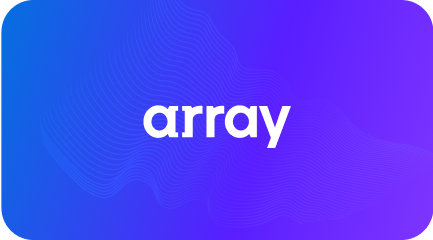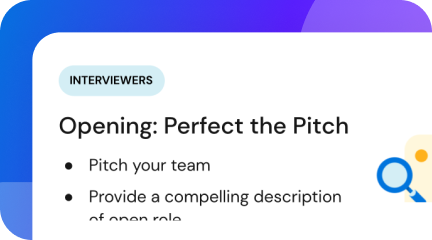The exploratory call. The technical screen. The second technical screen. The day with five or more interviews. These are just some of the interview rounds today’s candidates must go through to land a job. By the time an applicant reaches the final round, sometimes they have already had up to 10 interviews.
You might think this is standard these days for senior-level roles. Or, maybe your company is adopting more thorough interview practices. Either way, this brings up the question – why is the industry trending in this direction, and more importantly, is it necessary?
Everyone knows interview quality matters more than quantity in the long run, and the data backs that. Across 1,000 interviews, we found the average number of rounds for a hired candidate through BrightHire’s platform was 2.4 rounds, with the average interview lasting 40 minutes (excluding shorter, first round screens).
What does this tell us? You don’t need four or more interviews to adequately screen a candidate. Nor do interviewers need to spend over an hour on each conversation with a candidate.
The tradeoff between thoroughness and speed
According to Glassdoor, the amount of time employers spend on interviews has doubled since 2009. Unsurprisingly, interview fatigue is rising due to never-ending interview processes. This uptick in interviews is partly due to the belief that additional rounds help prevent hiring the wrong person, saving companies from spending $12,000 per bad hire every year. Even though this fear may be justified, it doesn’t mean that more rounds lead to better results.
While candidates are usually excited to move to the next stage of an interview, 57% lose interest when the hiring process is too long. Today, more candidates are speaking out against never-ending interviews. This viral LinkedIn post from a job seeker shows how too many rounds can lead an interested, qualified candidate to pull out of the interview process.
Better hires don’t require more interviews
How can you help your company make better hiring decisions while saving your team and job candidates time? Here are three key ways:
Limit the number of interview rounds
Determining how many rounds a candidate should go through depends on the position level. A good rule of thumb: the more senior a role, the more rounds there should be. A Google study found four rounds of interviews were enough to hire a candidate with 86% confidence. After that, confidence only rose by 1% for each new interview round.
Picking the right number of rounds not only helps your team make a confident decision, it’s also critical for a positive candidate experience. We recently spoke with a tech manager at a fast-growing startup who landed his job after 10 interview rounds. During the process, he spoke with everyone he would be working with, horizontally and vertically. While the candidate appreciated the thoroughness, he felt he would have understood his role and the team just as well with fewer rounds. Plus, with more structured interviews he could have avoided repetitive behavioral questions. Had he not gotten the job, he would have felt frustrated after spending days preparing and making time for the 10 interviews.
Ultimately, more rounds can help increase confidence in hiring or rejecting a candidate. But at a certain point, additional interviews stop making a meaningful difference and start frustrating candidates.
Ask the right questions
With employers spending an average of $4,129 per job on hiring, it’s important to use your interview time strategically.
One of the best ways to manage your time effectively: ask targeted, role-specific questions. By digging into these details, you can learn way more about a candidate than with generic behavioral questions. These questions are typically unique for each interviewer, which gives the candidate a well-rounded experience.
Here are some helpful examples of role-specific questions you can use to elicit more targeted responses and improve your screening practices:
- 34 Interview Questions to Ask a Demand Generation Manager
- 39 Interview Questions to Ask a Content Marketing Manager
- 39 Interview Questions to Ask a Marketing Coordinator
- 36 Interview Questions to Ask a Sales Director
- 31 Interview Questions to Ask an Account Executive
- 26 Interview Questions to Ask a Sales Development Representative
- 39 Interview Questions to Ask a Customer Success Manager
- 46 Interview Questions to Ask a Senior Software Engineer
- 36 Interview Questions to Ask a Machine Learning Engineer
- 40 Interview Questions to Ask a DevOps Engineer
Assess on the job skills
Another way to shorten your interview process is to test a candidate’s on the job skill sets. Take, for example, a software engineer. To understand their problem-solving abilities, ask them to fix a bug they’re likely to encounter in their role. For customer representatives, pretend to be a client on the line with them to understand their ability to think on their feet and deliver value to customers.
Take your interviews to the next level
With an interview intelligence platform like BrightHire, interviews can be structured, consistent, and ultimately, more efficient – saving your team valuable time and resources.
Want to learn more about transforming your hiring process? Check out the three steps to elevating your interviews and improving candidates’ experience.









